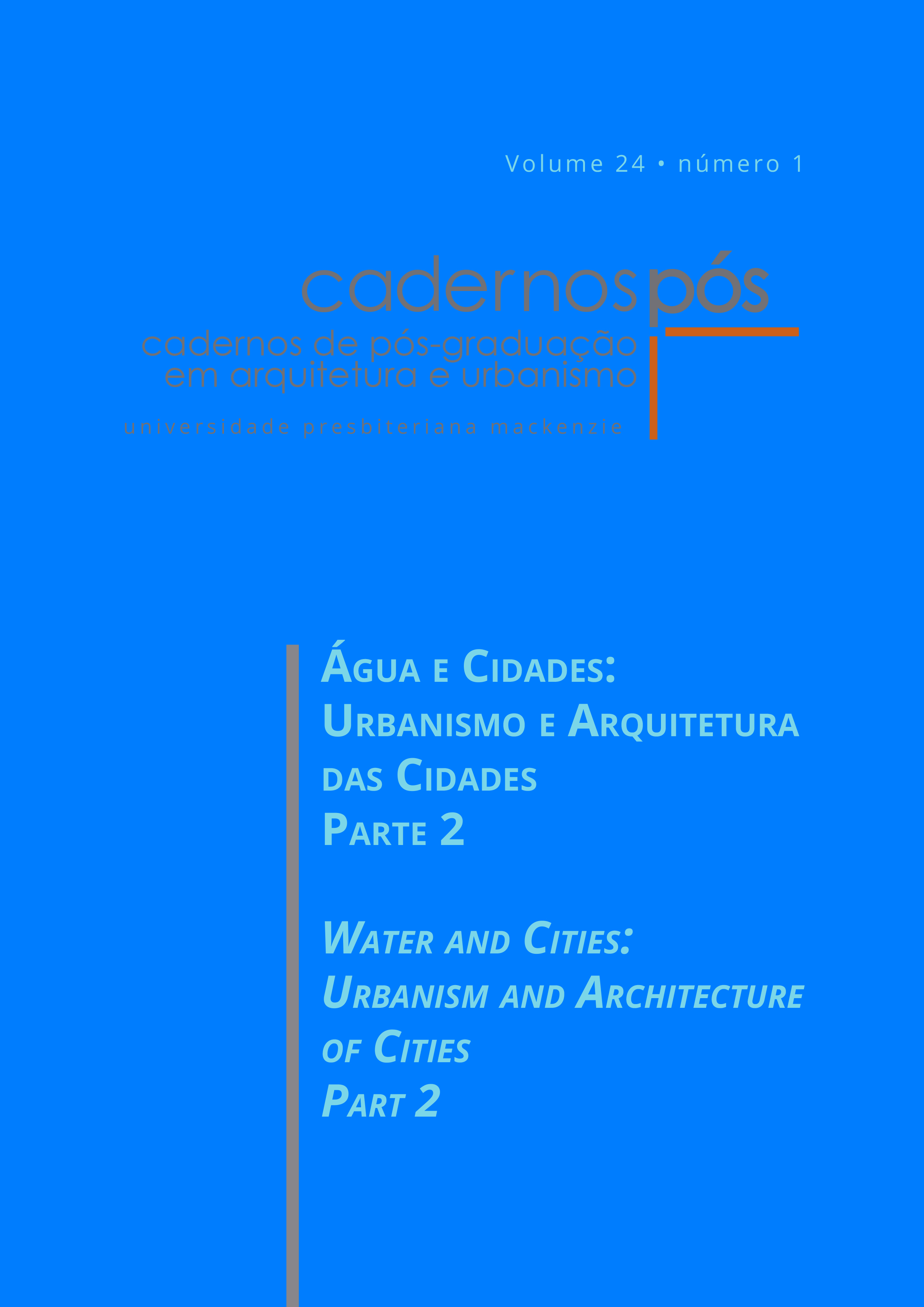Water towers in Brazil
a manifesto for their preservation
DOI:
https://doi.org/10.5935/cadernospos.v24n1p272-289Keywords:
Water Tower; Infrastructure; Architectural Heritage; Inventory; Preservation.Abstract
A technological product of the industrial era, the water tower consolidated itself as a fundamental part of water supply systems, one of the material bases for the existence and operation of cities. Still, despite their undeniable importance, the study of water towers has been relegated to academia, creating a gap that needs to be bridged. Starting from a bibliographic review of the rare research conducted on the subject and bringing as a contribution to the discussion a bibliography on the investigation and preservation of the architectural legacy of industrialization, this article, in addition to being a manifesto in favor of the recognition of water towers as architecture, the urgency of conducting research on these infrastructures and the importance of inventories to catalog them, has as its main objective the establishment of preliminary guidelines for the preservation of water towers as architectural heritage. Water towers, aside from their function, technical and aesthetic qualities and historical importance, are, first and foremost, material testimonies of our civilization that must be preserved.
Downloads
References
AGÊNCIA NACIONAL DAS ÁGUAS E SANEAMENTO BÁSICO (ANA). Atlas Águas. Brasília: ANA, 2021.
ANDRADE, T. de O. Torres de água: incursão em sua arquitetura. 2019. Dissertação (Mestrado em Arquitetura e Urbanismo) – Faculdade de Arquitetura e Urbanismo, Universidade de São Paulo, São Paulo, 2019.
ARENDT, H. A condição humana. 13. ed. Rio de Janeiro: Forense, 2017.
BARTON, B. Water towers of Britain. Londres: Newcomen Society, 2003.
BRUAND, Y. Arquitetura contemporânea no Brasil. 4. ed. São Paulo: Perspectiva, 2002.
GENICOT, L. F. De watertoren: architectuur, landschap. In: VAN CRAENENBROECK, W. Watertorens in Belgie. Brussel: Navewa, 1991. p. 135-167.
GOODWIN, L.; SMITH, G. E. K. Brazil builds: architecture new and old 1652-1942. New York: The Museum of Modern Art, 1943.
HOUWINK, P. Watertorens in Nederland: (1856-1915). Nieuwkoop: Uitgeverij Heuff, 1973.
KÜHL, B. M. Patrimônio industrial na atualidade: algumas questões. Série TICCIH - Brasil, São Paulo, v. 4, n. 1, p. 13-37, 2021.
KÜHL, B. M. Preservação do patrimônio da industrialização: problemas teóricos de restauro. Cotia: Ateliê Editorial, 2008.
MERKL, G. et al. Historische Wassertürme. München: Oldenburg Verlag, 1985.
MEVIUS, W. Baustile und Wassertürme. In: MERKL, G. et al. Historische Wassertürme. München: Oldenburg Verlag, 1985. p. 151-165.
MINDLIN, H. E. Modern architecture in Brazil. Rio de Janeiro: Colibris, 1956.
NETTO, J. M. de A. Arquitetura das torres d’água. Revista DAE: Revista do Departamento de Águas e Esgotos, São Paulo, v. 21, n. 38, p. 7-24, set. 1960.
RIEGL, A. O culto moderno dos monumentos. São Paulo: Perspectiva, 2014.
VAN CRAENENBROECK, W. Eenheid in Verscheidenheid: Watertorens in Belgie. Brussel: Navewa, 1991.
VEEN, H. D. Watertorens in Nederland. Rotterdam: Uitgeverij 010, 1989.
WAINWRIGHT, O. Demolition is an act of violence. The Guardian, Londres,
ago. 2022.
WERTH, J. Ursachen und technische Voraussetzungen für die Entwicklung der Wasserhochbehälter. In: BECHER, B.; BECHER, H. Die Architektur der Förder und Wassertürme. München: Prestel-verlag, 1971. p. 323-428.
WHITAKER, P. P. Abastecimento de água da cidade de São Paulo: sua solução. Boletim RAE, São Paulo, v. 8, n. 17, p. 3-99, nov. 1946.
Downloads
Published
How to Cite
Issue
Section
License
Copyright (c) 2024 Tiago de Oliveira Andrade, Francisco Spadoni

This work is licensed under a Creative Commons Attribution 4.0 International License.
Authors who publish in this journal agree to the following terms:
a) Authors retain the copyright and grant the journal the right of first publication, with the Project simultaneously licensed under the Creative Commons Attribution License that allows the sharing of the Project with recognition of the authorship and initial publication in this journal.
b) Authors are authorized to assume additional contracts separately for the non-exclusive distribution of the version of the Project published in this journal (e.g., publishing in an institutional repository or as a book chapter), indicating that it was originally published in this journal, with a link to the article.








 Todo o conteúdo de Cadernos de Pós-Graduação em Arquitetura e Urbanismo está licenciado sob
Todo o conteúdo de Cadernos de Pós-Graduação em Arquitetura e Urbanismo está licenciado sob 